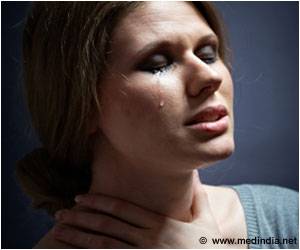About
Have you noticed that after a good cry, your skin feels baby soft?
If yes, then you are not alone. Researchers advocate a good cry now and again for a good cause. Crying helps to drain out stress toxins; it is self-soothing; it clears eye debris; it activates the parasympathetic nervous system; and it releases endorphins, which aid in alleviating pain. But what effect does it have on our skin?
Tears usually have a pH of about 7, and skin is around 5.5 or 6. While short-term tear exposure is not dangerous, long-term tear exposure may produce changes in skin moisture or mild discomfort due to pH differences.
But it's not only the pH that's important. What you do while sobbing and after that can strongly impact your skin.
What is the Composition of Tears and How Does it Impact our Skin?
To understand how your skin reacts to tears, you must first grasp what they are comprised of. According to the National Eye Institute, tears are primarily water, but they have three layers(1✔ ✔Trusted Source
How Tears Work
Go to source).
- The outside oily layer keeps tears from drying out too soon.
- The inner mucous layer permits the tear film to adhere to the surface of your eyes.
- The tear film is a tiny layer of tears that constantly coats the cornea of our eyes (the clear outer layer of the eyeball).
- The thickest, watery layer is in the middle, keeping the eyes moist and nourishing their tissues.
Tears are classified based on their triggers and composition.
- Basal and reflex tears exist to protect the eye from dirt or irritants
- Emotional tears are produced in response to emotions. Tears contain electrolytes, which explains their salty taste(2✔ ✔Trusted Source
The neurobiology of human crying
Go to source).
Glow on the Skin After Crying
Every day, we are exposed to a variety of scenarios in which we experience sadness, disappointment, tension, heartbreak, and other emotions that cause us to sob uncontrollably and shed tears.

Taking Care of Skin After Crying
Crying stimulates the release of endorphins, or feel-good chemicals, as well as a decrease in stress hormones like cortisol, which have been linked to acne and other skin problems.
So, it can be said that crying can help your skin, but aftercare is what matters.
As crying dehydrates you through lost electrolytes, it is advised to drink water and apply moisturizer. To hydrate skin and decrease irritation, use a moisturizer containing squalene, ceramides, or hyaluronic acid.
Skin Care for the Area Around your Eyes
The skin surrounding your eyes is extremely thin and prone to dark circles and puffiness. Many people are concerned that dark circles would make them appear older or exhausted.
Many home treatments and over-the-counter medications can help reduce this type of inflammation. Here are some doctor-approved techniques and tricks for caring for your eyes and surrounding skin.
Examine your Refrigerator
Some simple and low-cost treatments to treat the skin around the eyes can be found in your refrigerator.
For instance, a potato slice and a cucumber slice will help decrease swelling and diminish dark circles beneath the eyes.
You can just begin by putting cucumber slices in your eye area for 5 minutes. Then, for 5 minutes, replace them with potato slices. Repeat two or three times more for evident results.
Cucumbers include potent antioxidants that prevent inflammation, while potatoes contain a skin-lightening enzyme called catecholase.
Concentrate on Blotting
Another recommendation is to focus on blotting rather than rubbing under the eyes. Blotting is the process of dabbing your skin with a product or wiping it softly and repeatedly.
This decreases friction and irritation in the area. It is also suggested to keep facial creams at a colder temperature, or even in the refrigerator, to help minimize puffiness and irritation.
Stress and Sleep
When it comes to caring for the skin under your eyes, getting enough sleep and minimizing stress are essential.
Lack of appropriate rest or stressful life events can lead to physical changes around the eye areas, making us look older. Adults typically require 7 to 9 hours of sleep per night(3✔ ✔Trusted Source
Are You Getting Enough Sleep?
Go to source).
Apply a High-Quality Eye Cream
A good eye cream used twice a day can help enhance skin texture and reduce puffiness. There are various eye creams on the market, so the best approach to selecting the perfect one for you is to ask your dermatologist or a skincare professional.
Diet and Alcohol
Consuming too much alcohol or salt can cause puffiness, so it must be avoided.
Allergy-Related Eye Care
It is recommended to not rub your eyes if you wish to diminish under-eye pigmentation. Allergies may prompt you to massage your eyes to soothe the itch. Still, rubbing causes the delicate skin around the eyes to sag, resulting in broken capillaries and darkening the skin around your eyes.
Utilizing over-the-counter antihistamine drops and fake tear drops can also help with eye allergies.
The Health Benefits of Crying
It's no secret that a good cry can feel fantastic. While you can initially feel weary once the tears stop flowing, sobbing has long been known to have several physical and mental health benefits.
- Stress relief
- Mood enhancement
- Detoxification of the body
- Release of endorphins
- Self-soothing
- Pain relief
- Social support
- Grief recovery
- Emotional balance
Did you Know, Crying can Burn Calories?
Frequent crying can be caused by a variety of factors, including the loss of a loved one, a breakup, or depression symptoms. While you're experiencing intense emotion, you could see weight loss that seems to be connected. Weight loss induced by sadness and despair is more likely to be associated with a loss of appetite than crying.
While crying does burn calories, you'd have to cry for hours, if not days, to burn the same amount as a single brisk stroll.
According to one study, crying burns nearly the same amount of calories as laughing - 1.3 calories per minute. That implies you're burning 26 more calories in each 20-minute crying session than you would have without the tears. It isn't much.
When does Crying become a Concern?
Crying excessively or uncontrollably can be a sign of a more serious physical or mental health problem. In terms of mental health, an increase in sobbing may indicate that you require further care right now.
Conclusion
Crying is a natural part of life. Some people cry regularly, while others may only cry once in a while.
Regardless of how frequently you cry, care for the skin under and around your eye. Avoid rubbing your eyes as much as possible. This can aggravate any acne you may have by increasing puffiness and discoloration. Dirt and bacteria can potentially get into your eyes, causing irritation or inflammation.
Instead, after the tears have dried, apply a cold compress or gently wash your face with cool water. Follow this up with a moisturizer and hydration to replace electrolytes.







